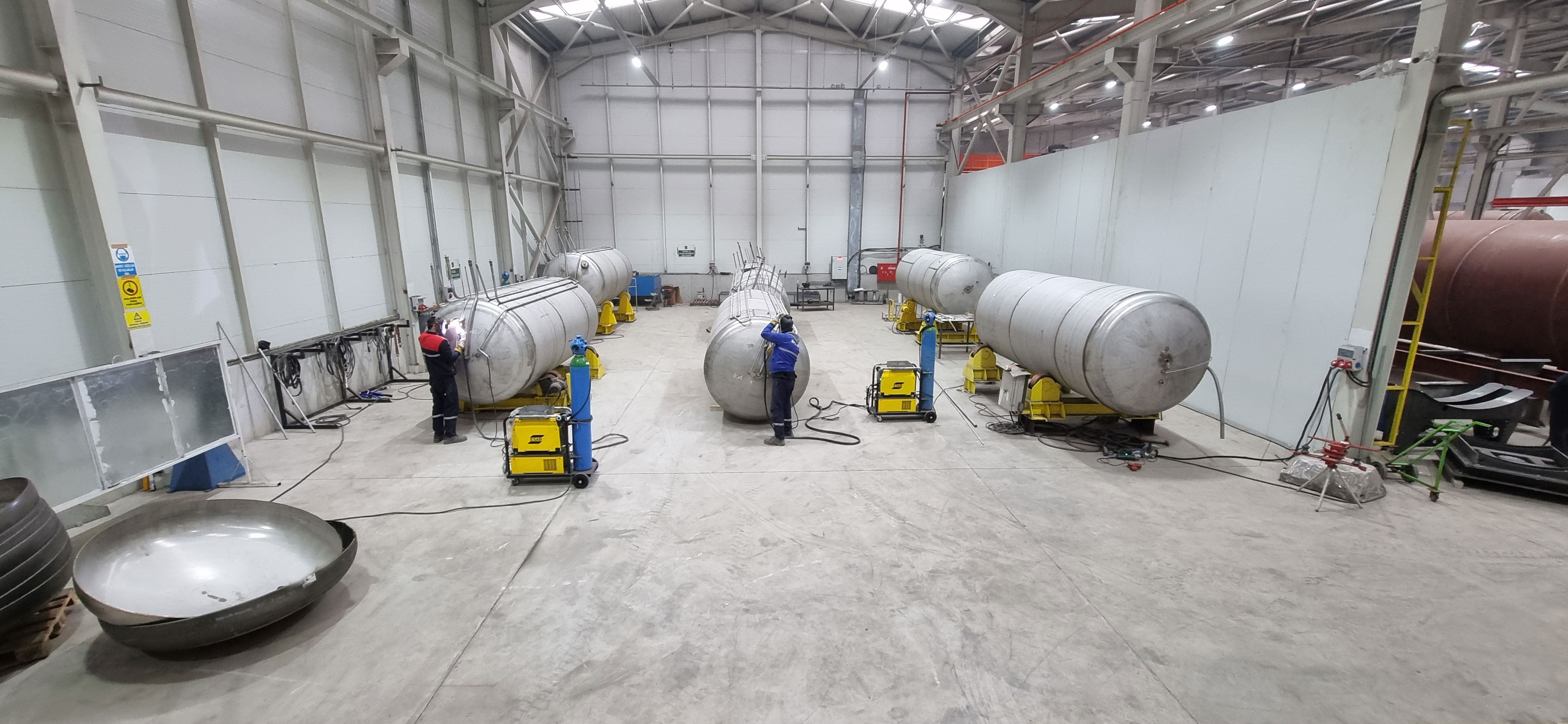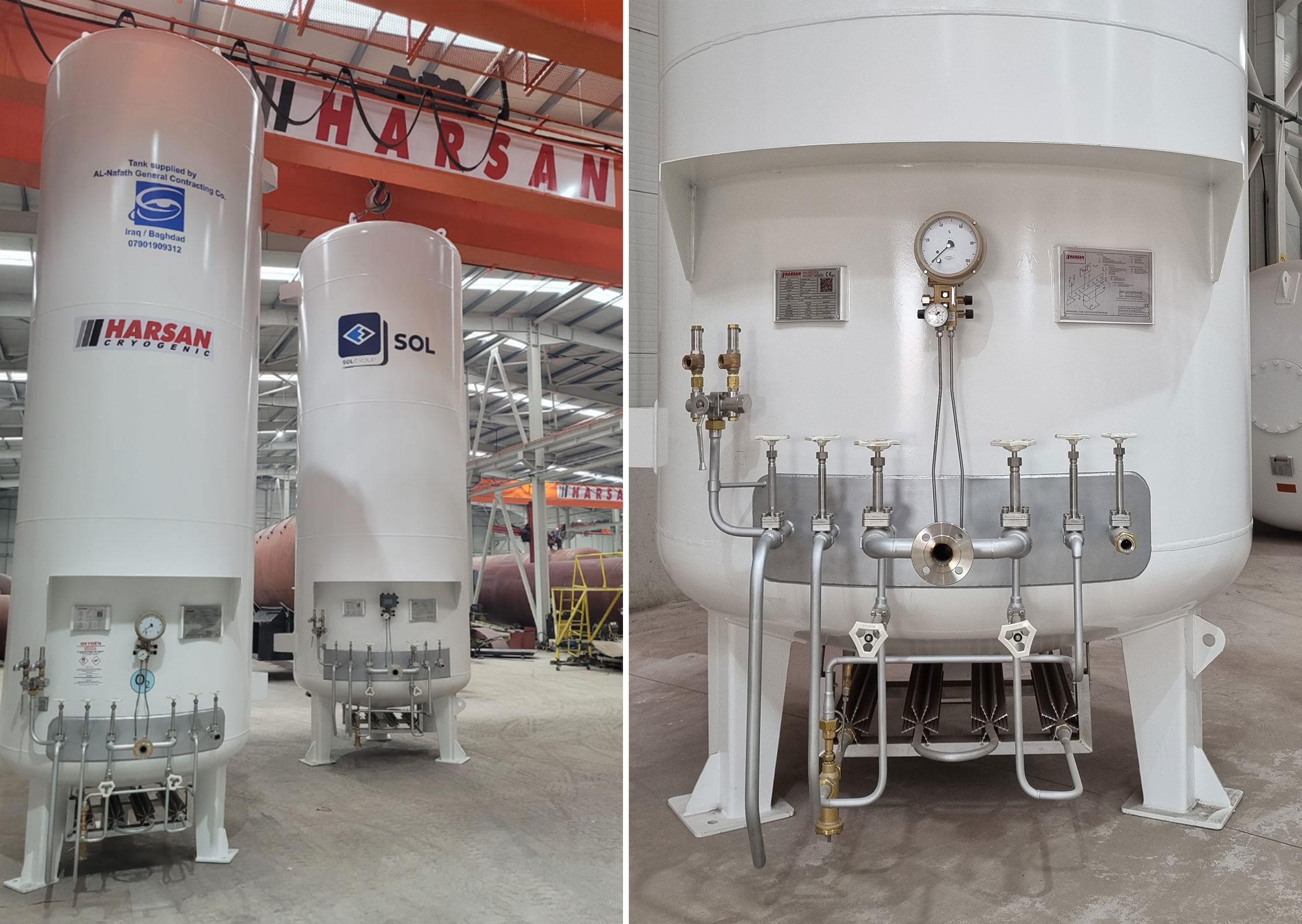





FEATURES OF HARSAN TANKS
Natural gas is composed primarily of approximately 90% methane, along with ethane, propane, butane, and other hydrocarbons. When natural gas is cooled to -162°C under atmospheric pressure, it undergoes condensation and transitions into a liquid phase. This transformation from gas to liquid gives rise to the term ‘Liquefied Natural Gas’ (LNG). During the liquefaction process, impurities such as carbon dioxide, sulfur compounds, and water, which can adversely affect combustion, are effectively removed. This purification enhances the purity and efficiency of the liquefied natural gas.
The volume of natural gas is significantly reduced, approximately 600 times, as it shifts from the gaseous phase to the liquid phase. This characteristic enables the transportation of large quantities of natural gas at low pressures, providing a viable solution for areas located far from natural gas pipelines. LNG addresses the energy needs of diverse environments such as schools, factories, mining areas, metal enterprises, residential areas, and more. Solutions tailored to each case are developed, considering the distinct energy requirements of these various settings.
In LNG tanks, all necessary markings compliant with CE, Π, and relevant standards are meticulously adhered to
APPLICATION AREAS
LNG storage tanks are essential in the energy sector, specifically for businesses involved in the production and storage of Liquefied Natural Gas. Industries such as natural gas processing plants, energy production, and LNG terminals rely on these tanks for efficient and safe storage.
LNG STORAGE TANKS GENERAL FEATURES
TYPE | STORAGE |
DESIGN STANDARDS | EN 13458 – ASME SEC VIII DIV 1 |
MEDIUM | LNG |
DESIGN PRESSURE | -196 °C / +50°C |
DESIGN TEMPERATURE | 3 BAR – 9 BAR |
VOLUME | 1M3 – 200M3 |
INSULATION | PERLİTE + VACUUM |
